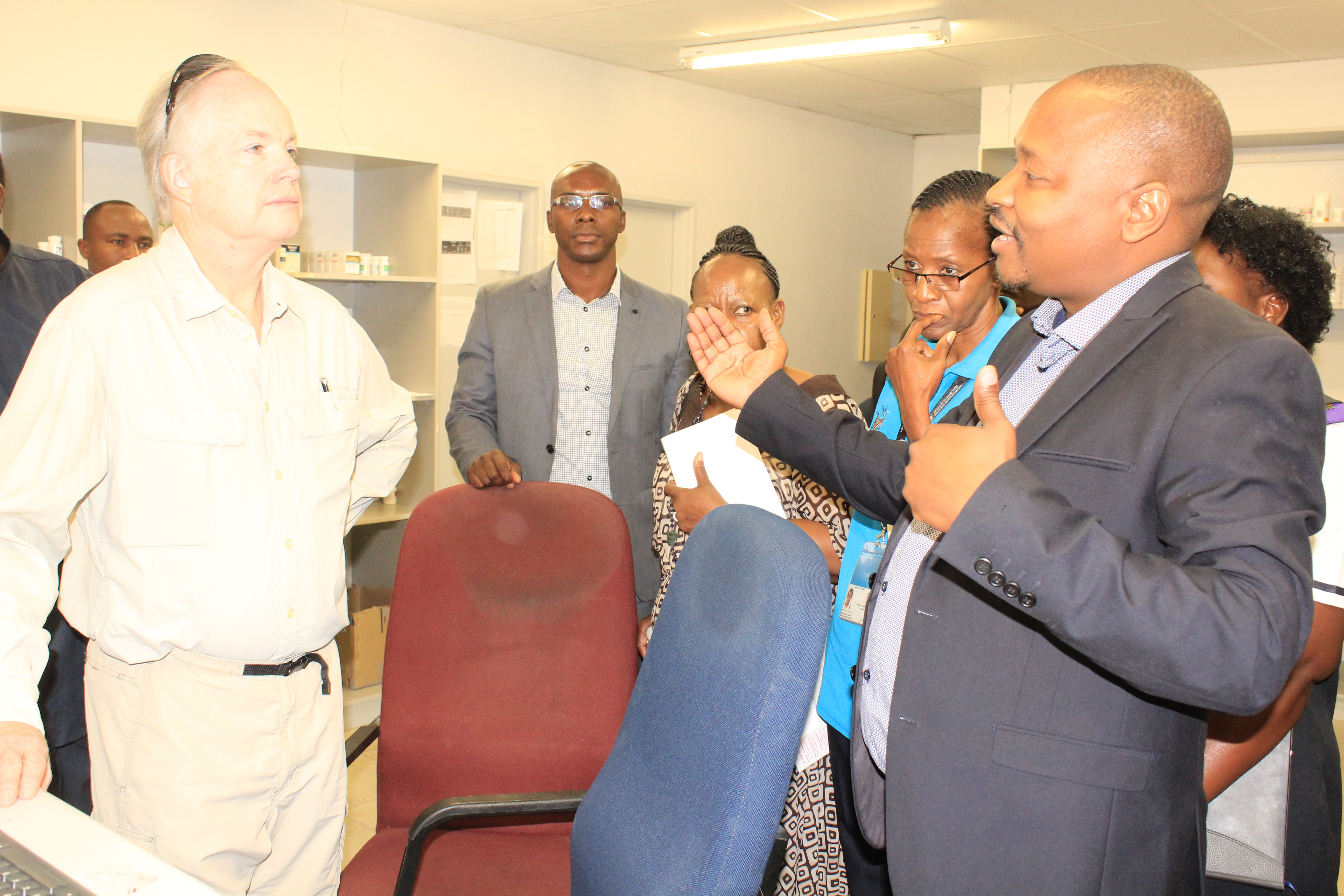
The SIAPS team in Namibia joined other PEPFAR-implementing partners for the orientation of USAID’s newly appointed Director for Southern Africa, Mr. John Groarke. On September 27-28, 2017, Mr. Groake visited health facilities in the Omusati and Oshana regions in the North Central part of Namibia where he received updates on the progress of the community-based ART (CBART) implementation in the regions. During the two day visit, SIAPS facilitated an event on USAID-implemented activities that have helped ART patients at health facilities and community-based points in the Onandjokwe district.
CBART is one of the models of differentiated care in Namibia aimed at bringing ART services closer to patients and is based on the 2017 edition of the National Guidelines for Antiretroviral Therapy that recommends reducing congestion and bringing ART services closer to rural communities. Since April 2017, 55 groups have been created with more than 650 stable patients (adhering well to the ART and that need less frequent visits to health facilities) who are now benefiting from these newly introduced community support groups.
SIAPS provided technical assistance to heath workers in utilizing the Electronic Dispensing Tool (EDT), mobile EDT, and paper-based tools that were needed to implement CBART, including dispensing ARVs through community adherence support groups. SIAPS also presented the tools, SOPs, and process flows so that patients can have access to ARVs through group dispensing.
During the Mission director’s visit, local leaders, health workers, and patients who benefit from these dispensing solutions shared their experiences. Patients said that the implementation of CBART included improved adherence, good viral load suppression results among group members, and a reduced waiting time to obtain ARV medicines after travelling long distances.
Intra-health Clinical Mentor, Dr. Johnface Mdala, indicated that “The Onandjokwe district has received a lot of support from USAID and partners in successfully implementing the country’s decentralization policies. This has led to reduced congestion at Shanamutango ART clinic as you will see as we walk through the corridors and meet the staff. I used to see between 400 and 500 patients a day at the ART clinic; this number has reduced to about 100 patients per day.”
Dr. Mdala attributed the reduced workload to decentralisation efforts made through CBART and to the nurse initiated and managed ART (NIMART), two initiatives that are supported by SIAPS.
Celebrating the community dispensing initiative, Onyaanya Constituency Councillor, Mr. Petrus Hambala said, “We are very glad for the help we have received from our regional management for Oshikoto district and from the US Government in all their work to improve the health of our people. As you can see, the members of Gwaanaka support group are very happy with the services that have been brought to them.”
Compiled by Bayobuya Phulu, Wezi Tjaronda, Harriet Kagoya, and Greatjoy Mazibuko.

